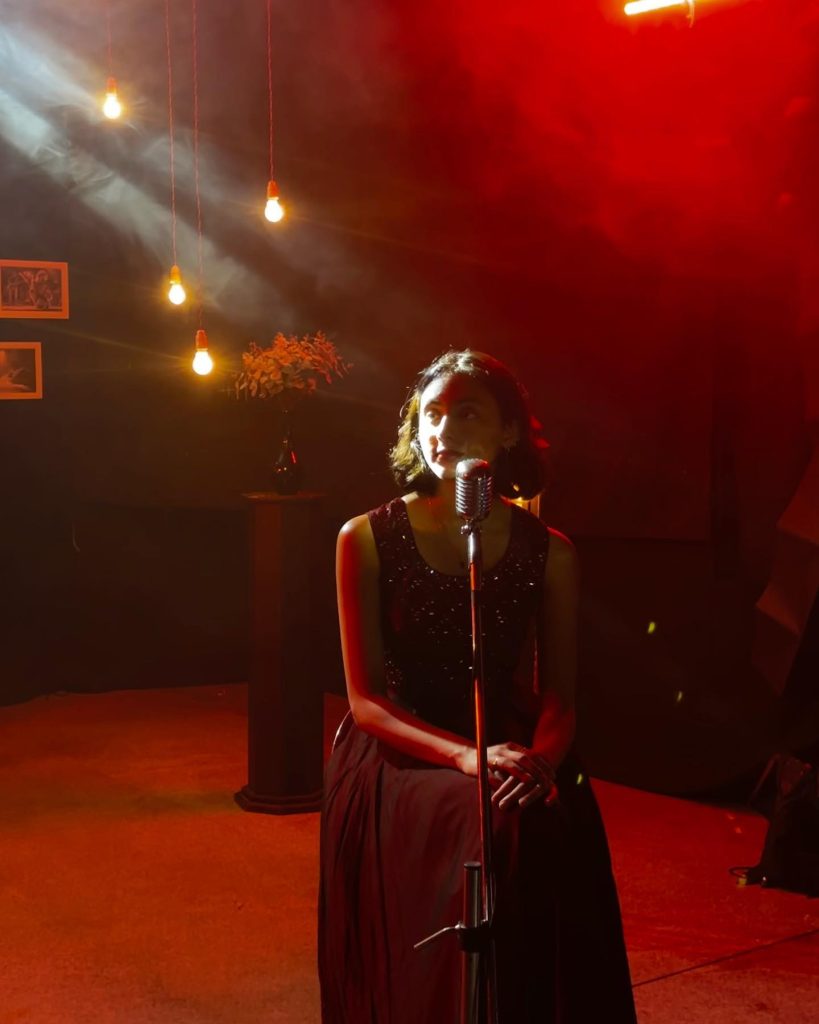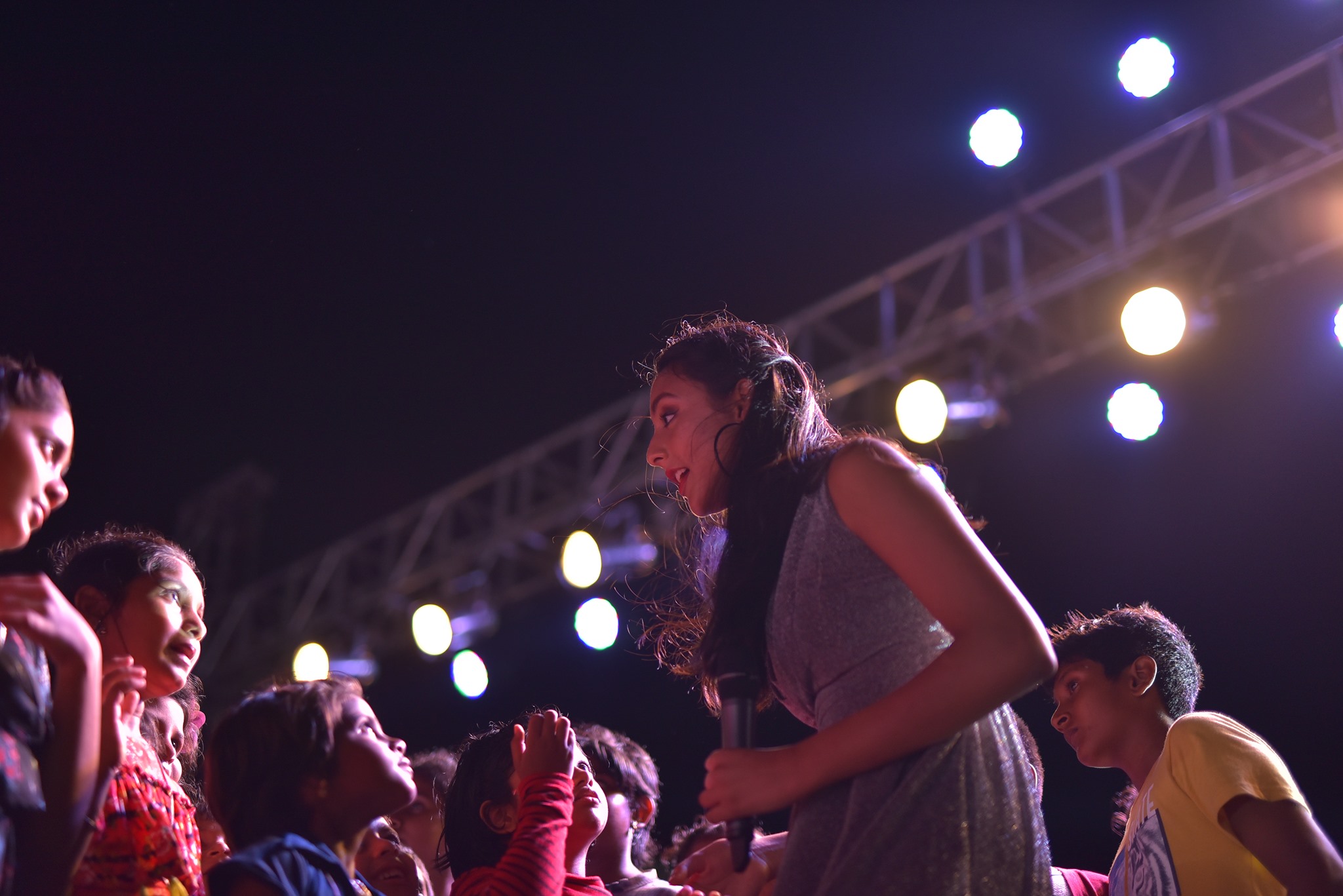(November 19, 2023) This year has been special for the Indian-origin singer-songwriter Hitha. The San Francisco-based teen pop singer, dubbed as one of the female artists changing the music scene globally, released her first Tamil song Vaanilai for the film Marakkuma Nenjam. Not just this, the eighteen year-old singer-songwriter reached the top 100 chart in the US in 2021. Born and brought up in the US, Hitha, who not just sings but also writes music, had released her debut album as a singer when she was merely 13. She has been writing songs since the age of eleven.
“I want my fans to know that if they are going through hard times, they can listen to my music to make themselves feel better, to shine a new light and to inspire my generation to keep going. Be strong, be you, be independent,” the artist said, emphasising that she does not perform just for entertainment but to give hope.
Hitha has been performing in major events like the North America Fashion Week and has travelled to India multiple times for her performances.
Music with a purpose
“I’m using my success to improve the world by shedding attention to crucial issues,” said the Global Indian. Majority of her songs have motivational lyrics. “I am deeply committed to speaking up for those who are unable to speak for themselves. For instance, as the Youth Ambassador for the group Unite 4 Good, I recently travelled to the slums of India to empower children. The youth are our future after all,” she said.
Passionate about music since as far as she can remember, Hitha’s songs are based on her own struggles as a youngster entering adulthood. The teen singer writes and sings in the hope that through her songs young listeners can develop relevant insights about the new phase of their life.
Hitha’s recent single release touches upon the various facets of teen anxiety. The album titled In My Head reassures that not feeling at your best at all times is acceptable. “This song was intended to encourage teens and help them feel heard,” she said. Similarly she was inspired to write We Will Last, when she realised that everyone needs support and someone or something to lean upon.

Hitha
Her song Tell me Why is about losing someone close to one’s heart. “We are emotional beings. Many times, losing someone may seem like the end of the world and we may not have all the answers. It is written to provide comfort to people going through this phase of life,” she said during the release of the song.
Finding her calling
Her affinity for music developed at a very young age. She was only four when her grandma introduced her to music and enrolled her to Indian classical singing classes. “But I never considered it as a possible career for me. Since my parents were immigrants and I was an Indian girl, I only saw people graduating from high school and going on to college to pursue careers in engineering, medicine, or the law,” she said in an interview. That is what she believed her path would be.
However, as she grew up, her passion for music also grew. Hitha has been fortunate that her parents encouraged her to do what she loved. “Music became a viable career for me when I wrote my first song at 11 and released it at 13. It was at that time that I realised that there is nothing else I could possibly do.”
After writing her debut song, Standing Up with Pride, the youngster had realised that she needed to write music to motivate people. Since then the young artist has devoted her creativity to the purpose.
Supportive parent
Hitha’s father was the one who first encouraged her to pursue a career in music. “The first step in my professional career was realising that I had his backing,” Hitha shared.


The singer’s father has been her travelling companion in her tours to different cities for recordings and performances. “Without him, I would not be here, either literally or figuratively,” she said. More than just being an ardent admirer, her father is one of her greatest inspirations and Hitha tries to live by some of his morals and convictions.
“My dad is truly one of the kindest human beings I know,” she said while talking about a song she dedicated to her father. “It honestly felt like fate to release Forever on Father’s Day. It couldn’t have been a better time,” she said adding, “I am just happy I could share this song with other sons and daughters on such a celebrated day when fathers truly deserve to shine.”
The song is a thank-you letter wrapped in EDM music. “My love for my dad is all-consuming and will last forever. Both as a father and daughter and as a teacher and student, my dad and I get along well. I learn so much from my father, and without him, I genuinely would not be who I am today,” the singer said.




